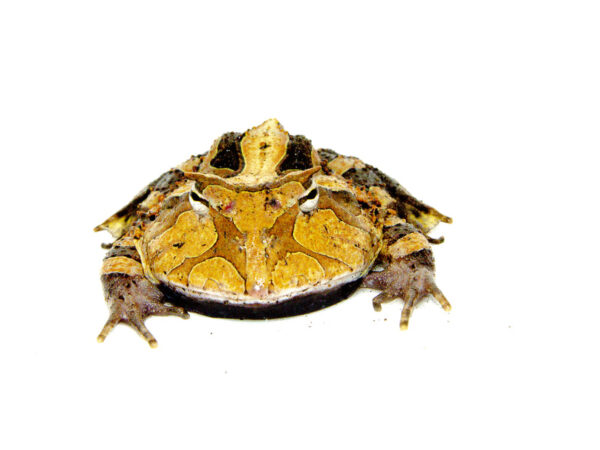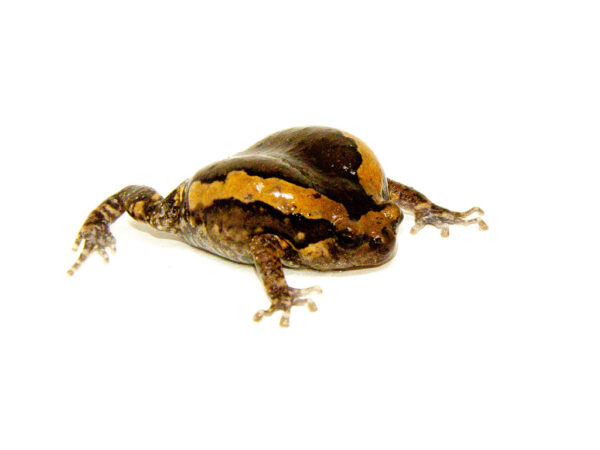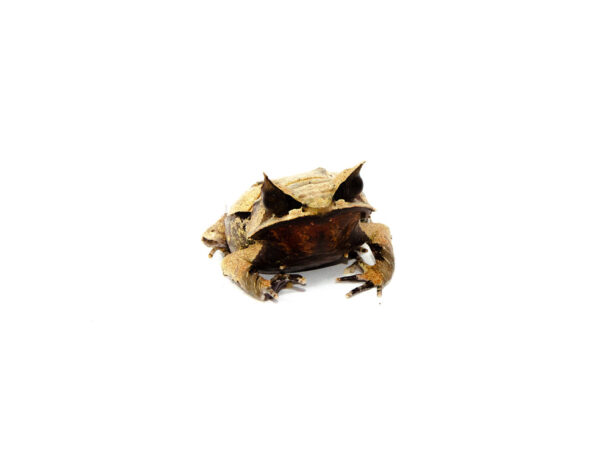Eastern Spadefoot Toad (Scaphiopus holbrookii): The Elusive Burrower
The Eastern Spadefoot Toad (Scaphiopus holbrookii) is a secretive amphibian native to the southeastern United States. Despite being classified as a toad, it differs from “true toads” (family Bufonidae) and belongs to the family Scaphiopodidae. This fascinating species is known for its underground lifestyle and sudden appearances after heavy rains.
Quick Facts
-
Scientific Name: Scaphiopus holbrookii
-
Common Name: Eastern Spadefoot Toad
-
Family: Scaphiopodidae
-
Size: 2 to 3 inches
-
Lifespan: Up to 10 years in the wild
-
Habitat: Sandy or loose soils, pine forests, fields, and coastal plains
-
Range: Eastern and southeastern United States
Appearance eastern spadefoot toad (scaphiopus holbrookii)
The Eastern Spadefoot Toad has smooth, olive to dark brown skin with irregular golden or tan lines forming a distinct hourglass pattern on its back. Its eyes are large and prominent with vertical (cat-like) pupils—an unusual trait among North American amphibians.
One of its key features is the dark, hardened “spade” on each hind foot. This keratinous structure helps it dig backwards into the ground, a behavior essential for its survival.
Behavior and Lifestyle eastern spadefoot toad (scaphiopus holbrookii)
The Eastern Spadefoot Toad is nocturnal and spends most of its life underground, emerging only during or after heavy rains to breed. This secretive nature makes it hard to spot in the wild, even in areas where it’s common.
It’s an explosive breeder—entire populations can emerge overnight to breed in temporary rain-filled pools. Tadpoles grow and metamorphose rapidly to escape before the water dries.
Diet
In the wild, these toads feed on a wide variety of small invertebrates such as:
-
Insects
-
Spiders
-
Worms
-
Crustaceans (in breeding pools)
They’re sit-and-wait predators, often burying themselves with only their eyes exposed, ready to ambush passing prey.
Habitat Needs
In captivity (rarely kept due to their secretive nature), they require:
-
Deep, loose, sandy substrate for burrowing
-
Low to moderate humidity with seasonal fluctuations
-
A shallow water dish
-
A secure, escape-proof enclosure with minimal disturbance
They’re more suitable for observational hobbyists rather than handling or display pets.
Conservation and Notes
Although not endangered, the Eastern Spadefoot Toad is considered a species of concern in some states due to habitat destruction and climate change affecting their breeding cycles.
Their reliance on ephemeral wetlands makes them vulnerable, and because they are so rarely seen, local population declines can go unnoticed.
Final Thoughts
The Eastern Spadefoot Toad (Scaphiopus holbrookii) is a perfect example of nature’s hidden treasures—spending most of its life underground, it reminds us how diverse and specialized amphibians can be. While not common in the pet trade, it’s an exciting species for herpetologists and conservationists alike.
Would you like a printable care guide or comparison with similar burrowing species like Couch’s Spadefoot?









Reviews
There are no reviews yet.